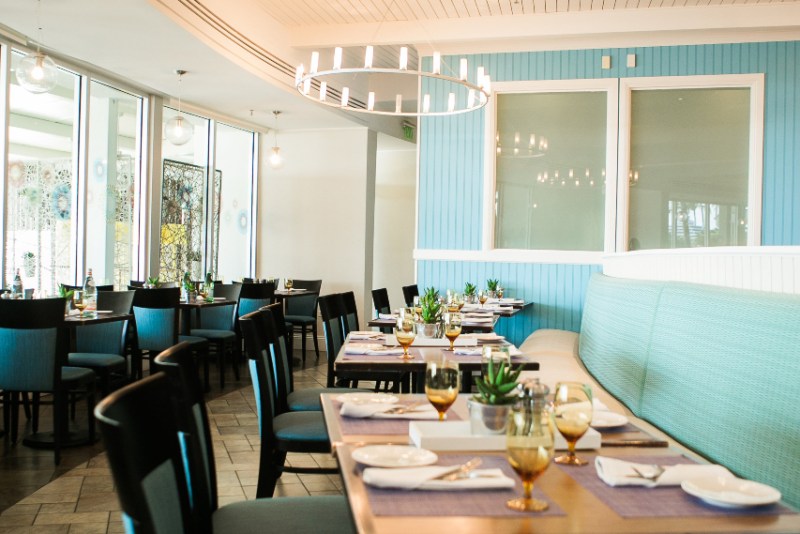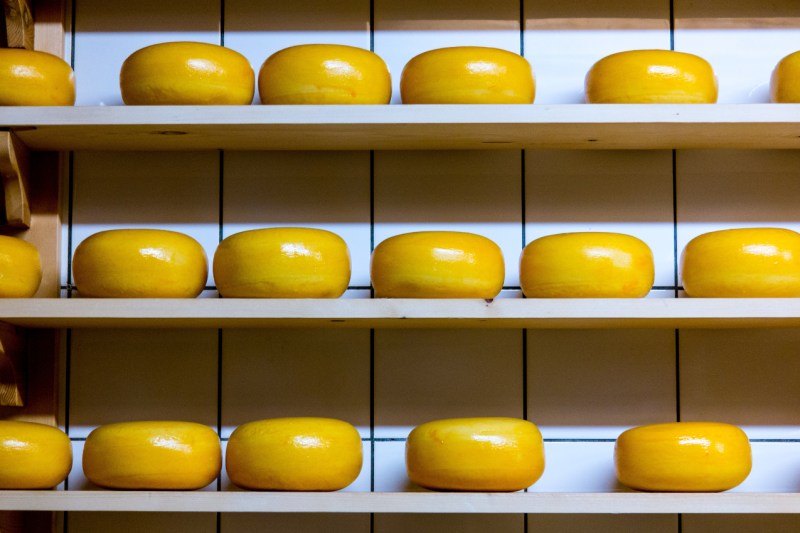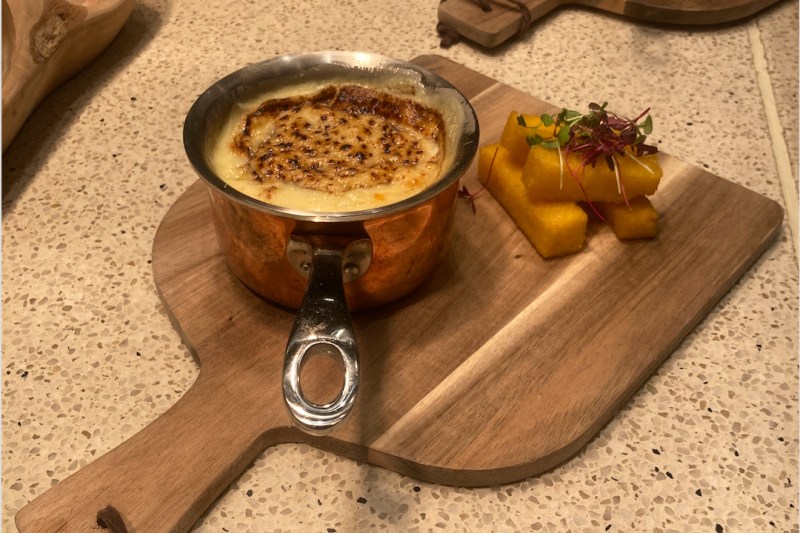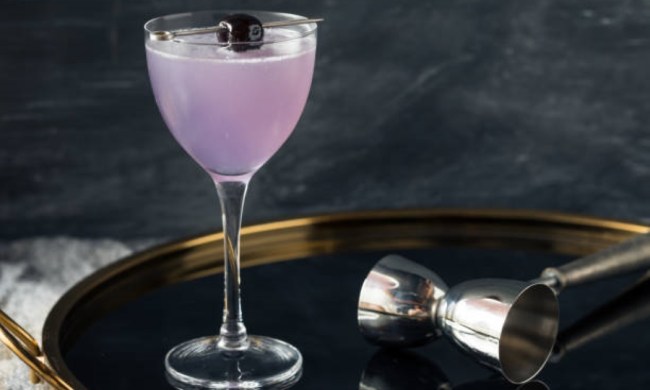Throughout the Caribbean, there are countless amazing meat dishes ranging from spicy jerk chicken to crispy pork chicharron. One of the most decadent meat dishes is Keshi yena from the island of Aruba. A rich dish of baked Dutch gouda stuffed with a savory and slightly sweet mixture of chicken and herbs, keshi yena is beloved among Aruban locals. Here to help guide The Manual through this unique multicultural dish is Chef Ever de Peña, the Complex Executive Sous Chef of La Vista restaurant located in the Aruba Marriott Resort.

Related Guides
What is Aruban Cuisine?
Despite being a small island, Aruba has its own unique culinary heritage. Aruban cuisine is heavy on comfort food and home cooking — beef stew is one of the most popular local dishes. As a former Dutch colony, the culinary influence of the Netherlands can be felt in many of the ingredients and snacks on the island, particularly the cheese. As a Caribbean island right off the coast of Venezuela, South American cuisine is another strong influence on Aruba.
Unsurprisingly, seafood is an important part of Aruban food. Fresh fish like red snapper is fried and enjoyed with fried plantains, polenta, and pan bati (an Aruban bread that resembles a pancake made from Sorghum bicolor, which grows on the island). Aruba also has a local hot sauce called pic di papaya. This spicy, slightly tart, orange-colored hot sauce is made from Madam Jeanette peppers and papayas and is ubiquitous throughout the island.
Keshi Yena — A Blend of Cultures

The name Keshi yena stems from the Dutch word kase, which means cheese. Keshi yena was created by slaves during the 17th century in Aruba. Slaves were brought to the island by the Dutch, who colonized the island. These slaves took advantage of Dutch leftovers, in Keshi yena’s case, the hollowed-out cheese rinds of Gouda or Edam thrown out by the Dutch. From this, the slaves stuffed the discarded rinds with meat (usually chicken but beef is also common) and vegetables and baked everything together. Traditional versions of keshi yena were sometimes baked in empty food cans or wrapped for baking in plantain leaves. Nowadays, keshi yena is sometimes placed into individual ramekins. Keshi yena is most commonly enjoyed during holidays like Christmas although it can also be found on restaurant menus throughout the year.
As a dish, Keshi yena perfectly represents the blend of cultures in Aruba. The cheese element hails from the Dutch but the meat mixture is a blend of native Caribbean ingredients with influences of Latin America. A surprising ingredient in Chef Peña’s Keshi yena recipe is ketjap manis, a sweet soy sauce from Indonesia (another former Dutch colony). The addition of this soy sauce adds a sweet and umami rich flavor to the keshi yena.
Keshi Yena

Serves 10-12
(By Chef Ever de Peña of La Vista restaurant in Aruba Marriott Resort)
A native Aruban, Chef Ever de Peña began his culinary career in 2005 at the Renaissance Hotel in Aruba, where he worked his way up from student apprentice to Junior Sous Chef. He then became Executive Chef at the Manchebo Beach Resort & Spa in Aruba. In 2016, Chef Peña joined the Aruba Marriott Resort as Complex Executive Sous Chef.
Ingredients:
- 2 pounds chicken breast
- 1-2 limes
- 4 whole shallots
- 3 ounces chopped garlic and 1 garlic clove
- 4 quarts water
- 12 peppercorns
- 1 or 2 whole onions and 3 cups of diced onions
- 1 celery stalk with leaves
- bay leaf (bruised)
- 3 cups tomatoes diced
- 3 cups bell pepper diced
- 2 ounces Piccalilli (mustard pickle)
- 5 ounces cocktail onions
- 5 ounces green olives
- 4 ounces raisin
- 3 ounces cashew nuts
- 1 tablespoon parsley, minced
- Tabasco sauce to taste
- 12 ounces ketchup
- 3 ounces ketjap manis
- 10 ounces Dutch Gouda, sliced
- Salt and pepper to taste
Method:
- To season the chicken, squeeze the limes and rub the chicken with the juice. Then, season the chicken with salt, pepper, shallots, and 1 clove of chopped garlic. Marinate for several hours.
- Arrange marinated chicken in a shallow baking dish and bake for one hour at 350 degrees Fahrenheit. Once cooked, let the chicken cool at room temperature. Alternative cooking method: Brown the chicken in a pan with 2 tbsp of butter.
- When the chicken has cooled, shred into small pieces and place into a large pot.
- Add into pot: 4 quarts water, 2 teaspoons salt, 12 peppercorns, 1 or 2 onions, 1 celery stalk with leaves, and bay leaf (bruised). Bring to a boil.
- Once boiling, reduce heat and simmer for twenty minutes or until chicken is tender. Strain and reserve the broth, discarding the vegetables.
- As the chicken cools, sauté in a pan: Two tablespoons of butter or olive oil, 3 cups diced tomatoes, 3 cups diced onion, 3 cups diced bell pepper, and 3 ounces chopped garlic.
- Add and stir in pan: 5 ounces cocktail onions, 5 ounces green olives, 4 ounces raisins, 3 ounces cashew nuts, 1 tablespoon parsley, 12 ounces ketchup. Add salt and pepper to taste. Add Tabasco here if desired.
- Simmer until the tomatoes are reduced, about twenty to thirty minutes. When done, remove from heat and let cool.
- If keshi yena is to be baked, preheat the oven to 350 degrees. Make sure mixture is well-mixed before placing it in a 13 by 9 by 2 baking pan. Top with sliced Dutch Gouda cheese. Cover loosely with tin foil.
- Bake at 350 degrees F for 60 minutes. Let cool before serving.



